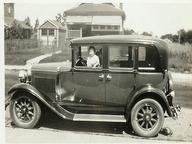Quiz Answer Key and Fun Facts
1. From July 13 to 30, 1930, the first edition of the FIFA World Cup, played by only 13 teams, was won by its host country. Where was it held?
2. In August 1931, a massive flooding event, possibly the most lethal of its kind in human history, reached its peak in which country?
3. While he had been nominally king of his country for several years, Faisal finally achieved full independence on October 1932 for which country?
4. On July 20, 1933, Nazi-led Germany entered the Reichskonkordat, a treaty rather important for the developments in 1930s Germany. In which country was it signed?
5. The Dionne quintuplets, born on May 28, 1934, became the first set of quintuplets to all survive infancy. In which country were they born?
6. City treasurers worldwide celebrate July 16, 1935, when the world's first parking meters were installed in which country?
7. The Tulkarm shooting on April 15, 1936 marked the beginning of three years of bloody revolt in which no longer existing country?
8. During her attempt at a round-the-world flight, Amelia Earhart disappeared along with her navigator and plane on July 2, 1937. What territory (it was not an independent country at the time) did she take off from on that fateful day?
9. Lasting from July 24 to November 16, 1938, the battle of the Ebro was a bloody and deciding encounter in which country's civil war?
10. On November 30, 1939, Soviet forces invaded which country, quickly reaching but then stalling at the Mannerheim line fortifications?
Source: Author
WesleyCrusher
This quiz was reviewed by FunTrivia editor
gtho4 before going online.
Any errors found in FunTrivia content are routinely corrected through our feedback system.
